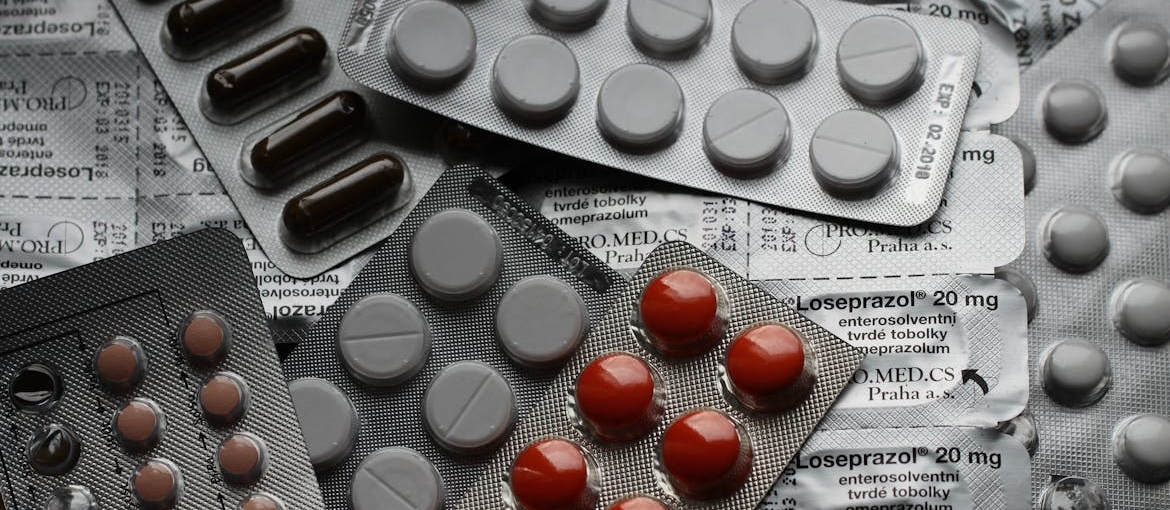Hydrocodone is a prescription opioid often used to treat pain. While it can help manage pain, it also carries a high risk of dependence. Hydrocodone withdrawal symptoms can be intense and difficult to handle. Recognizing the signs early and looking for help can make a big difference in recovery. Addiction treatment centers in West Virginia provide essential support for those struggling with opioid dependence. We’ll explore the symptoms of hydrocodone withdrawal, what happens to your body when you stop taking painkillers, and how to manage the process. So, whether you are experiencing withdrawal yourself or helping someone else, knowing the signs of hydrocodone withdrawal and how to get support can improve the chances of successful recovery.
What Happens to Your Body When You Stop Taking Painkillers?
When you stop taking hydrocodone, your body goes through changes as it adjusts to the absence of the drug. Hydrocodone is an opioid that affects the brain and body by blocking pain signals and creating feelings of euphoria. Over time, your body becomes used to these effects, and it starts to rely on the drug. We’re going to go over what are some of the withdrawal symptoms that result when a person stops taking opioids and how long it will take for these symptoms to pass.

How Hydrocodone Affects the Brain and Body
When taken, hydrocodone binds to opioid receptors in the brain, blocking pain signals and creating a sense of relief or euphoria. So, this is why it is often prescribed for managing moderate to severe pain. However, over time, the body becomes used to the drug, and the brain starts to rely on hydrocodone to feel normal. This is how dependence can develop. The body also builds a tolerance to hydrocodone, meaning higher doses are needed to get the same effect.
Benzodiazepines (benzos) are often prescribed for anxiety and sleep problems. So, they work by calming the brain and nervous system. Like hydrocodone, using benzos for a long time can lead to dependence and tolerance. Benzo detox is best done under medical supervision, as withdrawal can be dangerous without proper care. Both hydrocodone and benzo detox programs focus on managing withdrawal symptoms safely while addressing the root causes of dependence.
When you stop taking the drug suddenly, your brain and body must adjust to the absence of hydrocodone. So, this can cause many withdrawal symptoms from hydrocodone as your body tries to regain balance without the drug. The brain becomes less able to naturally manage pain and mood without hydrocodone’s influence.
Some of the common withdrawal symptoms of hydrocodone include anxiety, muscle aches, sweating, and irritability. This process shares similarities with cocaine withdrawal, as both drugs affect the brain’s reward system and mood regulation. Just like hydrocodone, cocaine use can lead to dependence, making it hard for the brain to function without the drug. Cocaine addiction rehab centers focus on helping individuals detox safely and regain control over their lives.

How Long Does It Take for Hydrocodone to Leave the System?
When you stop taking hydrocodone, it takes time for the drug to completely leave your system. How long this takes can vary based on several factors. On average, hydrocodone stays in the body for about 24 to 36 hours after the last dose. However, the exact time depends on things like your metabolism, age, liver function, and how long you’ve been taking the drug.
People who have been using hydrocodone for a long time may find it takes longer for the drug to fully leave their system. In addition to medical treatment for withdrawal, therapy like dialectical behavior therapy for addiction (DBT) can be helpful during recovery. DBT helps individuals manage intense emotions and improve coping skills, which is especially useful for those struggling with addiction.
Hydrocodone is processed by the liver and excreted through urine. The half-life of hydrocodone, which is the time it takes for half of the drug to leave the body, is around 3.8 hours. But it can take several half-lives for the drug to be fully cleared. For some people, hydrocodone can be detected in urine for up to 3 days, while others may find it stays in their system for up to a week or more. During this time, withdrawal symptoms may start, and their severity can depend on how much hydrocodone you are taking and for how long. The sooner you stop taking hydrocodone, the quicker it will begin to leave your system.
What Are the Withdrawal Effects of Hydrocodone?
Withdrawal from hydrocodone happens in stages. Each stage comes with different effects on the body and mind. Knowing what are the withdrawal symptoms of hydrocodone can help you prepare and look for the right help. So, the stages of withdrawal are:
- Early withdrawal symptoms (First 24 Hours)
- Peak withdrawal symptoms (Days 2-4)
- Late-stage withdrawal (Days 5-10 & Beyond)

Early Withdrawal Symptoms (First 24 Hours)
The first day of withdrawal can feel intense. Common symptoms include restlessness and sweating. Muscle aches may also begin, causing discomfort. So, many people feel anxious and irritable during this time. These feelings happen because the body starts reacting to the absence of the drug.
Since hydrocodone affects how the brain manages pain and stress, stopping it suddenly can make you feel uneasy. If you’re going through withdrawal, finding support can make a big difference. A rehab center Huntington WV residents recommend can provide the care and guidance needed during this difficult time. Programs for properly detoxing and managing withdrawal symptoms are available at these facilities.
Peak Withdrawal Symptoms (Days 2-4)
The next stage is often the hardest. Cravings for hydrocodone become very strong. Physical symptoms like nausea, vomiting, and diarrhea are common. So, these can make you feel weak and dehydrated. Many people also experience an increased heart rate and higher blood pressure. These changes can feel alarming, but they are part of the body adjusting to life without the drug. Also, it’s important to stay hydrated and rest as much as possible during this time.
Late-Stage Withdrawal (Days 5-10 & Beyond)
So, by this stage, the worst physical symptoms usually fade. However, lingering effects like fatigue and depression can continue. Trouble sleeping is also common. These symptoms may make you feel frustrated, but they usually get better with time. For some people, withdrawal doesn’t fully end after the first week. Post-acute withdrawal syndrome (PAWS) can last for weeks or months. PAWS includes emotional challenges like anxiety, mood swings, and difficulty focusing.

Treatment Options for Hydrocodone Withdrawal in West Virginia
Getting the right treatment for hydrocodone withdrawal is important to manage symptoms and ensure safety. So, the withdrawal process can be tough because your body is adjusting to life without the drug. Symptoms like muscle aches, anxiety, and nausea can make it hard to cope on your own. Medically supervised detox can help by providing medication to reduce discomfort and monitor your health. Counseling and therapy are also important for long-term recovery, helping you address the emotional and mental challenges of withdrawal.
Medically Supervised Detox for Safety when Managing Withdrawal Symptoms
Medically supervised detox is one of the safest ways to manage hydrocodone withdrawal symptoms. Withdrawal can be uncomfortable and, in some cases, risky without proper care. In a supervised detox, trained medical staff monitor you closely to ensure your safety. So, they can provide medications to ease symptoms. This support helps reduce cravings and makes the process more manageable.
Medical detox is especially important for people with severe dependence or health issues. Withdrawal can cause high blood pressure, rapid heart rate, or dehydration from vomiting and diarrhea. Another benefit of medical detox is emotional support. Withdrawal often comes with mood swings, irritability, or depression. Having experts nearby can help you feel more stable and less overwhelmed. Most detox programs also prepare you for the next step in recovery. They guide you toward counseling, therapy, or rehab programs to address the root causes of addiction.
Therapy and Counseling in Addiction Recovery
Therapy and counseling are key parts of addiction recovery. So, they help you understand why addiction started and how to manage triggers. Therapy gives you tools to deal with stress, cravings, and negative thoughts. It also helps you build healthy habits for the future. Counseling can be one-on-one, in a group, or with family. Talking with a therapist helps you share your feelings in a safe space.
Group therapy lets you connect with others who have been through similar struggles. Family counseling helps rebuild trust and support within your home. Additionally, behavioral therapies like CBT (cognitive behavioral therapy for substance use disorders) are very effective. They teach you how to change harmful patterns of thinking and behavior. Rehab programs often include counseling as part of a complete plan. These programs give you structure and guidance as you work to recover.
Addiction Treatment Centers and Accessible Therapy Solutions
Addiction treatment centers in West Virginia provide safe and supportive care for those who want to recover. So, these centers offer programs designed to meet different needs, including detox, therapy, and aftercare. Trained staff help patients through each step, making the process less overwhelming. Many centers also offer medication-assisted treatment to reduce withdrawal symptoms and cravings. In West Virginia, finding therapy solutions is easier than you might think. Some centers offer both in-person and online options, so you can choose what works best for you.
Online therapy can be a good choice if you need help but cannot travel. Treatment centers also focus on long-term recovery. So, they teach skills to handle stress, avoid triggers, and build healthy routines. Group therapy for addiction allows patients to connect with others who understand their struggles. Accessible care is a priority in West Virginia. Many centers accept insurance or offer payment plans to make treatment affordable. Some programs help people find low-cost or free support.

Recovery Tips and Long-Term Healing from Hydrocodone
Recovery takes time, but there are simple steps that can help. Building a support system is very important, and understanding stigma in addiction and recovery can make it easier to look for help and stay committed. Surround yourself with people who care about you, like family, friends, or support groups. Talking to others who understand your struggles can make you feel less alone. So, creating healthy routines is also helpful. Regular exercise can boost your mood and reduce stress. Eating healthy foods gives your body the energy it needs to heal. Getting enough sleep helps both your body and mind recover.
Simple activities like walking, yoga, or deep breathing can calm your mind when you feel stressed. So, it’s also important to find healthy ways to cope with cravings or triggers. Writing in a journal, talking to a trusted friend, or mindfulness-based treatment can help you manage tough moments. Set small goals for yourself and take things one step at a time. Also, celebrate your progress, no matter how small it seems. Recovery is not always easy, but small steps can lead to big changes over time. If you feel stuck or overwhelmed, don’t be afraid to ask for help. Counselors, therapists, and rehab programs can give you tools to stay on track.
Moving Forward After Hydrocodone Dependence
Hydrocodone withdrawal symptoms can be tough, but recovery is possible with the right support. Knowing the symptoms helps you understand what your body and mind are going through. So, if you or someone you know is struggling, don’t wait to look for help. Recovery may take time, but every step forward is a sign of progress. With patience and the right care, you can leave addiction behind and focus on a healthier future!



